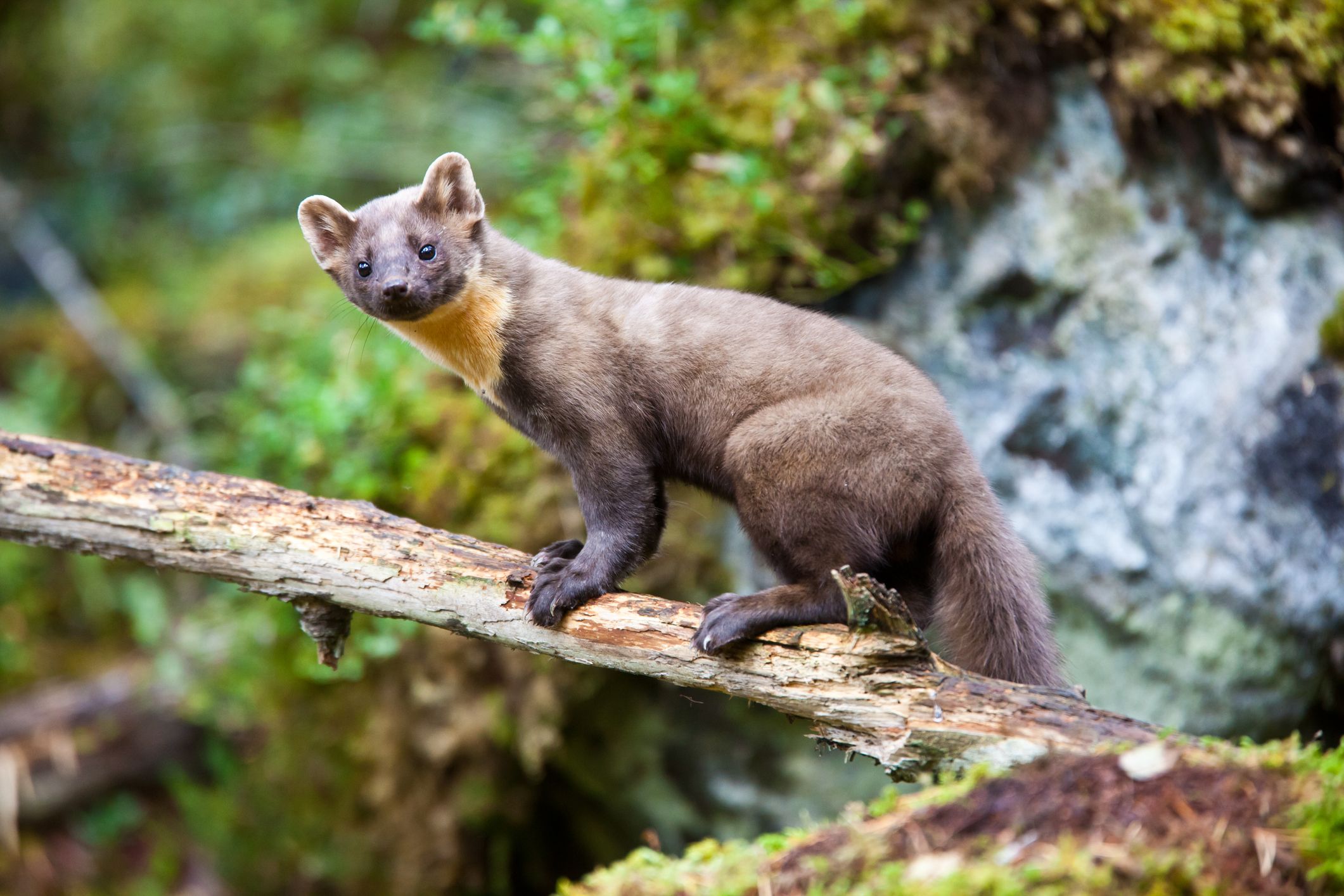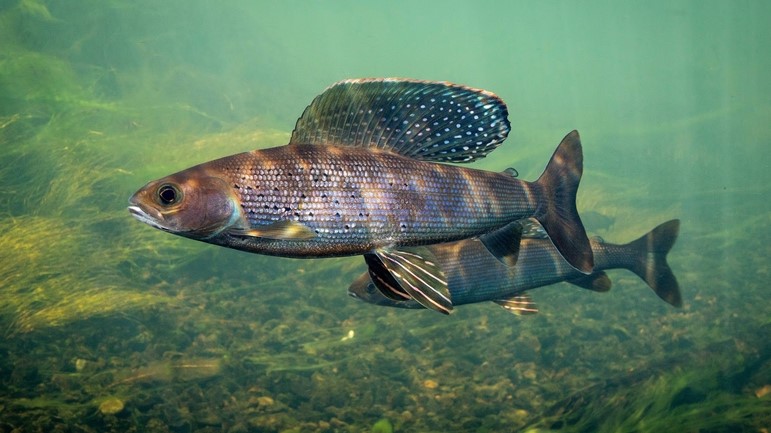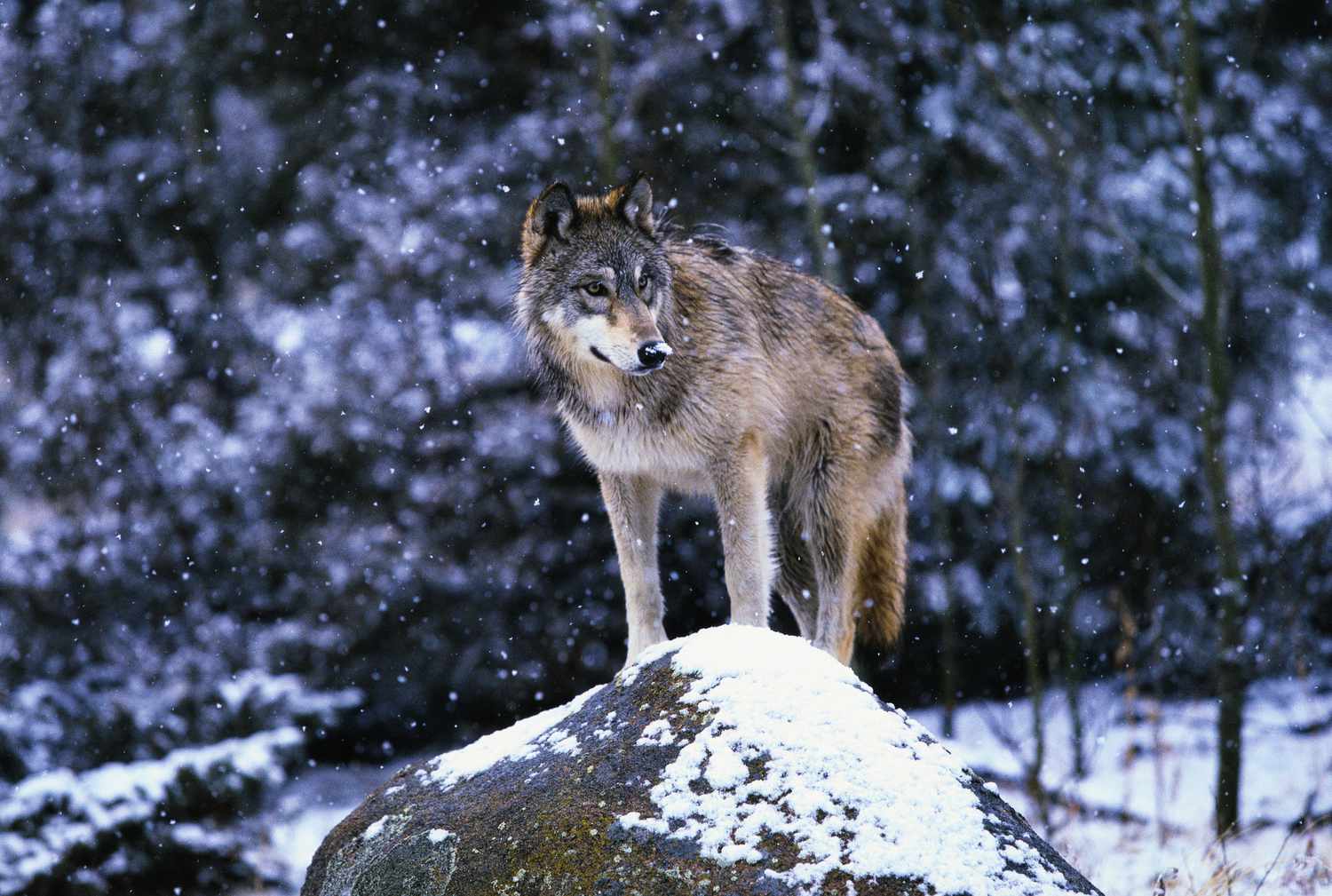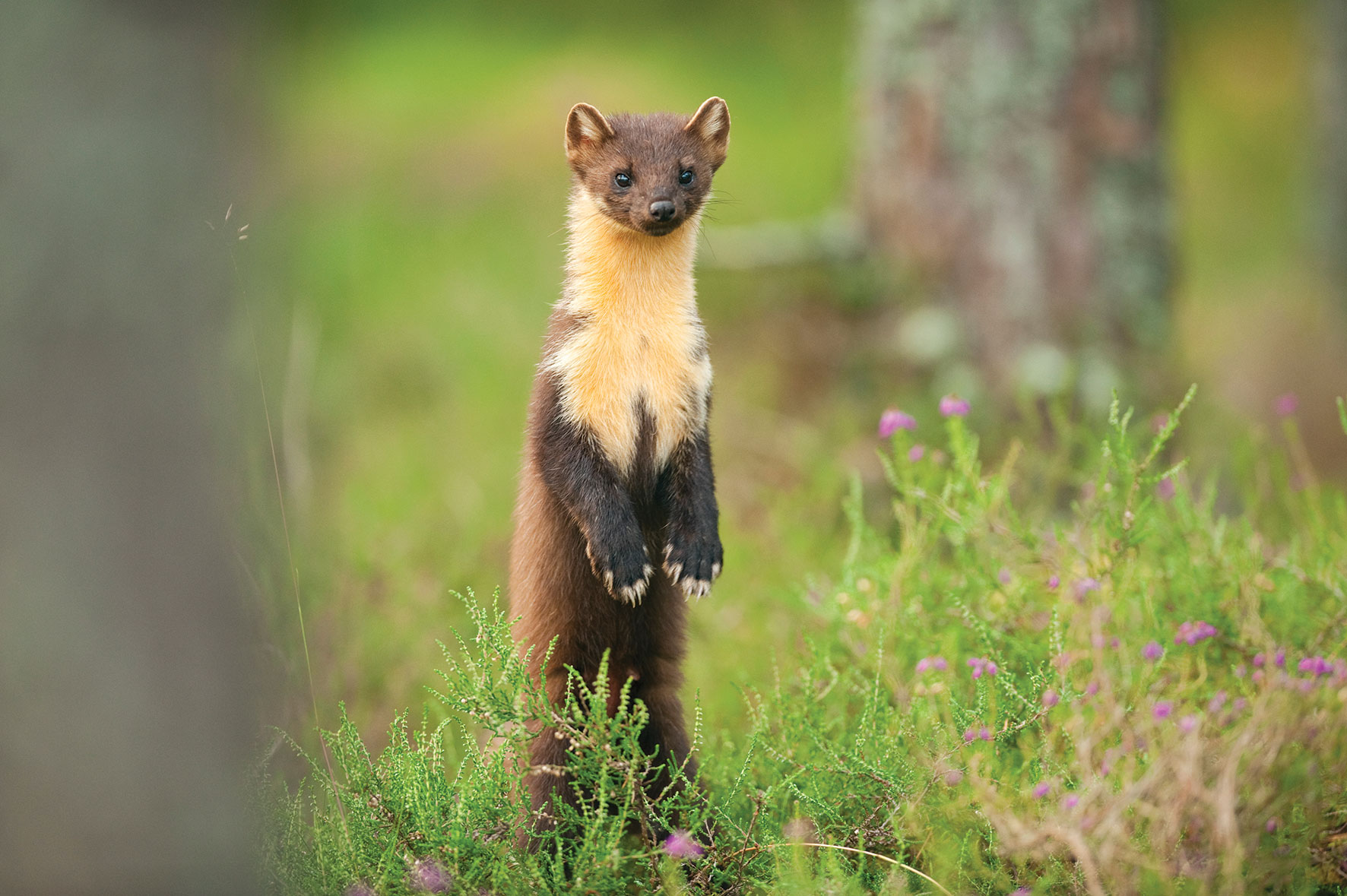The taiga, also known as the boreal forest, is a vast, northern wilderness that stretches across North America, Europe, and Asia in the high northern latitudes.
It is the largest land biome on Earth, covering about 17 percent of the planet’s land surface area. The taiga is characterized by its dense coniferous forests, long, cold winters, and short, wet summers, providing a unique environment for a variety of organisms.
You are reading: 13 Types Of Animals in Taiga
In this article, we will explore the types of animals that live in the taiga biome and how they have adapted to survive in this harsh environment.

13 Types Of Animals in Taiga
Caribou
Caribou, also known as reindeer in Europe, are one of the largest animals that live in the taiga biome. They are members of the deer family and are found in North America, Greenland, Scandinavia, and Russia.
Caribou are nomadic animals that are constantly moving in search of food. During the spring migration, they can travel in huge herds of hundreds of thousands of individuals, and some herds migrate several thousand miles in a year. In Alaska, caribou prefer treeless tundra and mountains during all seasons, but many herds winter in the boreal forest (taiga).
Caribou eat a variety of plants, including the leaves of willows, sedges, flowering tundra plants, mushrooms, lichens (reindeer moss), dried sedges (grasslike plants), and small shrubs (like blueberry). Female caribou are the only female deer to grow antlers.
Arctic Grayling

The Arctic grayling is a medium-sized freshwater fish that lives in the taiga biome. It belongs to the family Salmonidae, which also includes fish such as salmon and trout.
The Arctic grayling is found in North America, Europe, and Asia, and is known for its large, sail-like dorsal fin. It is a hardy fish that can survive in cold, clear streams and lakes, and is often sought after by anglers for its beauty and willingness to strike a variety of spinners, spoons, baits, and flies.
Other fish species that live in the taiga include brook trout, burbot, chum salmon, lake chub, lake whitefish, longnose sucker, pygmy whitefish, round whitefish, and Siberian taimen.
Bears
Bears are one of the most iconic animals that live in the taiga biome. The American black bear is one of the two bear species that live in the taiga, and it is found throughout North America.
Black bears are omnivores, meaning they eat both plants and animals, and they have a varied diet that includes berries, nuts, insects, small mammals, and fish. They are also known to scavenge for food and will eat carrion if they come across it.
Black bears are excellent climbers and can climb trees to escape danger or to find food. Other bear species that live in the taiga include grizzly bears, which are found in North America, and brown bears, which are found in Eurasia.
All bear species have thick fur coats that help them stay warm during the cold winters in the taiga.
European Adders
The common European adder is a venomous snake species that is found in many taiga biomes. Although the species is venomous, its bite is rarely life-threatening.
The common European adder can be recognized by the dark ‘zigzag’ pattern running down its back. The taiga does not offer a particularly suitable habitat for reptiles, and for this reason, relatively few species are found in the cold forests of the north.
The common European adder is the most common snake species in taiga biomes and is found further north than any other snake.
Beavers
Beavers are one of the animals that live in the taiga biome. They are known for their ability to build dams across rivers and streams, creating wetlands that serve as important habitats for other taiga animals.
Beavers are the largest rodents in North America and Eurasia, and they have a flat, paddle-shaped tail that they use to swim and to slap the water as a warning signal. They are herbivores and feed on the bark, leaves, and twigs of trees, particularly aspen and willow.
Read more : Discover 5 Animals Roaming atop Britton Hill – Florida’s Highest Point
Beavers play an important role in the taiga ecosystem by creating wetlands that help to regulate water flow, filter pollutants, and provide habitat for a variety of plants and animals. However, beavers are also hunted and trapped for their fur, and their populations have declined in some areas.
Gray Wolves

Gray wolves are one of the largest animals that live in the taiga biome. They are fierce predators that can hunt and kill very large mammals, including moose, elk, and caribou.
Gray wolves have many adaptations that help them survive in the taiga, including a social adaptation to live in packs, which enables them to hunt large animals that would otherwise be difficult to hunt. They also have a very sensitive sense of smell and hearing, which helps them locate prey quickly.
Gray wolves have long legs with large paws that help them navigate through deep snow, and their thick coats keep them warm during the cold winters.
Gray wolves are found in many biomes as long as food is plentiful and the climate is relatively cold, including the Siberian Taiga, which is one of the habitats they are best suited to.
Boreal Chorus Frogs
The boreal chorus frog (Pseudacris maculata) is a small amphibian that is found in many taiga biomes. It is native to Canada, from central Quebec to eastern British Columbia, and north to the Northwest Territories and the southern portion of the Yukon.
The boreal chorus frog is a tree frog that is known for its distinctive call, which sounds like a finger running over the teeth of a comb. The frog is usually gray or tan in color, with a dark stripe running down its back.
Boreal chorus frogs are found in a variety of habitats, including marshes, bogs, and ponds, and they breed in the spring when they lay their eggs in the water.
The tadpoles hatch from the eggs and develop into frogs over the course of the summer. The boreal chorus frog is an important indicator species for the health of wetland ecosystems, and its presence is often used as a measure of the quality of the habitat.
Pine Marten

The pine marten is a small mammal that is found in many taiga biomes. There are two species of pine marten: the European pine marten and the American pine marten.
The European pine marten is native to and widespread in most of Europe, Asia Minor, the Caucasus, and parts of Iran, Iraq, and Syria, while the American pine marten is found throughout Canada, Alaska, and parts of the northern United States.
Pine martens are long, sleek mammals that are similar in appearance to weasels, and they have sharp claws and teeth that can be dangerous. They are fast-moving, agile animals that are both on the ground and in trees.
Pine martens are solitary animals that only come together to mate. They are carnivores and feed on small mammals, birds, insects, bird eggs, and fruit. Pine martens play an important role in the taiga ecosystem by controlling the populations of small mammals and insects.
Moose
Moose are the largest browsing animals in the taiga biome. They are herbivores and feed on a variety of plants, including willow, broad-leaved trees, aquatic plants, and grasses.
Moose have many adaptations that help them survive in the taiga, including their ability to eat and digest pine and spruce needles, which is essential to their survival in the winter. They also have long legs that help them navigate through deep snow, and a thick coat that keeps them warm during the cold winters.
Moose depend on high-quality feeding areas in the shrub zone along river floodplains and on the early successional growth of woody plants in burned or cutover forest.
Intensive browsing by moose can alter the composition of the forest in its early stages of growth, often increasing the dominance of conifers, which they do not consume in as great amounts as they do broad-leaved trees.
Moose are an important food source for humans living in isolated rural areas of the taiga, and harvesting a moose for winter food is an important and even critical element of survival.
Bobcats
Read more : 7 Types Of Ruminant Animals With Pictures
Bobcats are medium-sized cats that are native to North America. They are also known as red lynx and are listed as Least Concern on the IUCN Red List since 2002.
Bobcats are adaptable animals that can live in a wide variety of habitats, including forests, grasslands, swamps, deserts, and mountains. They are solitary and territorial animals that mark their domains with their scent.
Bobcats are opportunistic hunters and prey upon a wide variety of animals, including mice, voles, snowshoe hare, grouse, woodchucks, beaver, deer, and turkeys. They hunt primarily by sight and sound, and once they have located prey, they stalk until they are close enough to make a quick dash and attack.
Bobcats are also known for their distinctive call, which sounds like a woman screaming. They are important predators in the taiga ecosystem and help to control the populations of small mammals and birds.
Black Bears
Black bears are one of the most common and widely distributed bear species in the world, and they are found throughout North America. They are omnivores, meaning that they eat both plants and animals, and their diet varies depending on season and location.
Black bears typically live in largely forested areas, but will leave forests in search of food, and are sometimes attracted to human communities due to the immediate availability of food. They are opportunistic eaters and will eat a variety of foods, including grasses, roots, berries, insects, fish, and mammals, including carrion.
Black bears are important predators in the taiga ecosystem and help to control the populations of small mammals and birds. They are also hunted for their meat and fur, and their populations have declined in some areas.
Fishers
The fisher is a small carnivorous mammal that is native to North America and is found in many taiga biomes. It is a member of the mustelid family, which also includes weasels, otters, and minks.
Fishers are forest-dwelling creatures that prefer continuous forest to other habitats. They have been found in extensive conifer forests typical of the boreal forest, but are also common in mixed-hardwood and conifer forests.
Fishers are competent tree climbers, but they spend most of their time on the forest floor. Fishers are shy and elusive animals that are rarely seen even in areas where they are abundant. They are active year-round and do not hibernate.
Fishers are omnivorous and their primary foods include small rodents, squirrels, rabbits, birds, eggs, fruit, porcupines, and carrion. They are important predators in the taiga ecosystem and help to control the populations of small mammals and birds.
Canada Lynx
The Canada lynx, also known as the Canadian lynx, is a medium-sized North American lynx that ranges across Alaska, Canada, and northern areas of the contiguous United States.
The Canada lynx is characterized by its long, dense fur, triangular ears with black tufts at the tips, and broad, snowshoe-like paws. It stands about 20 inches (51 centimeters) tall at the shoulder and weighs between 5 and 17 kg (11 and 37 lb). The lynx is sexually dimorphic, with males larger and heavier than females.
The Canada lynx is a solitary animal that is active year-round and does not hibernate. It is an important predator in the taiga ecosystem and feeds primarily on the snowshoe hare, which makes up more than 75% of its diet.
The Canada lynx is listed as threatened in the lower 48 states under the Endangered Species Act due to habitat loss and fragmentation, climate change, and other human activities that have compromised both the lynx and its habitat.
FAQS
1. What is the taiga biome?
The taiga biome is a vast, northern wilderness that stretches across North America, Europe, and Asia in the high northern latitudes. It is characterized by its dense coniferous forests, long, cold winters, and short, wet summers.
2. What types of animals live in the taiga biome?
The taiga biome is home to a variety of animals that have adapted to the long, cold winters and limited food availability. Some of the animals that live in the taiga include caribou, Arctic grayling, bears, European adders, beavers, gray wolves, boreal chorus frogs, pine martens, moose, bobcats, black bears, fishers, and Canada lynx.
3. How have these animals adapted to survive in the taiga?
These animals have various adaptations to survive in the taiga, such as hibernating during the coldest parts of the year, migrating during the winter months, having a thick coat for insulation, and stashing food during the summer for eating during the winter.
4. Why are these animals important to the taiga ecosystem?
These animals play important roles in the taiga ecosystem by controlling the populations of small mammals and birds, helping to regulate water flow, filtering pollutants, and providing habitat for a variety of plants and animals.
5. What threats do these animals face in the taiga biome?
These animals face threats such as habitat loss and fragmentation, climate change, hunting, and other human activities that have compromised both the animals and their habitat.
Source: https://petstutorial.com
Category: Animals










